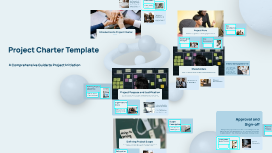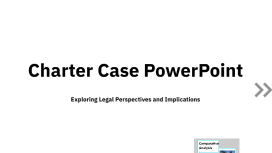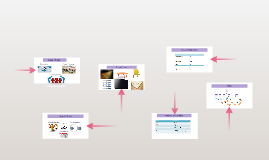Project Charter Template
Transcript: Importance of a Project Charter Key Elements of a Project Charter The Project Charter is crucial as it provides a clear direction and accountability from the onset. It helps prevent scope creep and miscommunication, ultimately leading to project success. A typical Project Charter includes a project vision, objectives, key stakeholders, scope description, risks, and budget estimates. These elements ensure that the project is well-defined and understood by all parties involved. Project Overview Project Summary Provides a general overview of the Project including past uses of the Project Site(s), Areas of Potential Environmental Concerns (APEC), and Project activities taken to date. Project Goals, Business Outcomes, and Objectives Indicates the key goals and objectives of the Project and explains the NCSP Logic Model (see Appendix A) Risk Identification Project Risks Overview of Project Charter Template Risk identification involves pinpointing potential risks that could impact project success. This process utilizes brainstorming sessions, expert interviews, and historical data analysis to uncover risks that may arise during the project lifecycle, ensuring proactive management. Understanding project risks is essential for successful project management. Identifying, assessing, and mitigating risks helps ensure that projects meet objectives and stay within scope, budget, and timeline. PROJECT CHARTER ESSENTIALS Key components outlining project scope and management. PURPOSE CHANGE MANAGEMENT Explains the intent behind the project charter, detailing its foundational role in guiding the project throughout its lifecycle. Indicates how change is managed depending on if the project is in the planning or implementation phase, ensuring adaptive responses to evolving project dynamics. Indicates the security level of the document, establishing measures to safeguard sensitive project information from unauthorized access. Risk Assessment Risk Mitigation Strategies Effective risk mitigation strategies involve developing actions to reduce the likelihood or impact of identified risks. These may include risk avoidance, transfer, acceptance, or reduction, tailored to the project's specific context and needs. Risk assessment categorizes each identified risk based on its likelihood and impact. Techniques like quantitative and qualitative analysis, along with risk matrices, help prioritize risks, allowing teams to focus on the most critical threats to project success. Project Charter Template Stakeholder Engagement Plan A Comprehensive Guide to Project Initiation Stakeholders A stakeholder engagement plan outlines strategies for keeping stakeholders informed and involved. This includes communication methods, frequency of updates, and feedback mechanisms. Effective engagement cultivates trust and proactively addresses stakeholder concerns, enhancing project support. Understanding stakeholders is crucial in project management as they directly influence the project's success and outcome. Identifying, defining roles, and engaging with stakeholders ensures that their needs and expectations are met, leading to smoother project execution. Roles and Responsibilities Identification of Stakeholders Clearly defining roles and responsibilities ensures accountability and transparency among stakeholders. Each stakeholder must understand their function and the expectations regarding their participation in the project. This clarity mitigates conflicts and fosters collaboration throughout the project's duration. Identifying stakeholders involves recognizing all individuals, groups, or organizations that may impact or be impacted by the project. This includes clients, team members, suppliers, and regulatory bodies. Mapping stakeholders helps understand their influence and importance in the project's lifecycle. Defining Project Objectives Project Purpose and Justification Project objectives clearly outline what the project aims to achieve. They should be specific, measurable, attainable, relevant, and time-bound (SMART), guiding the team's efforts and evaluating the project's success at completion. A clear understanding of a project's purpose is vital for its success. This section outlines the objectives, alignment with organizational goals, and the problem statement that the project addresses, providing a foundational basis for strategic planning and decision-making. Organizational Goals Understanding the Problem Statement Aligning project objectives with organizational goals is crucial for resource optimization and strategic focus. Projects that support company-wide priorities have higher chances of securing stakeholder buy-in and achieving success. The problem statement describes the challenge that the project seeks to address. A well-defined problem statement guides project direction and helps stakeholders understand the project's value in resolving critical issues. Approval and Sign-off Scope Description Approval Process The project scope

















